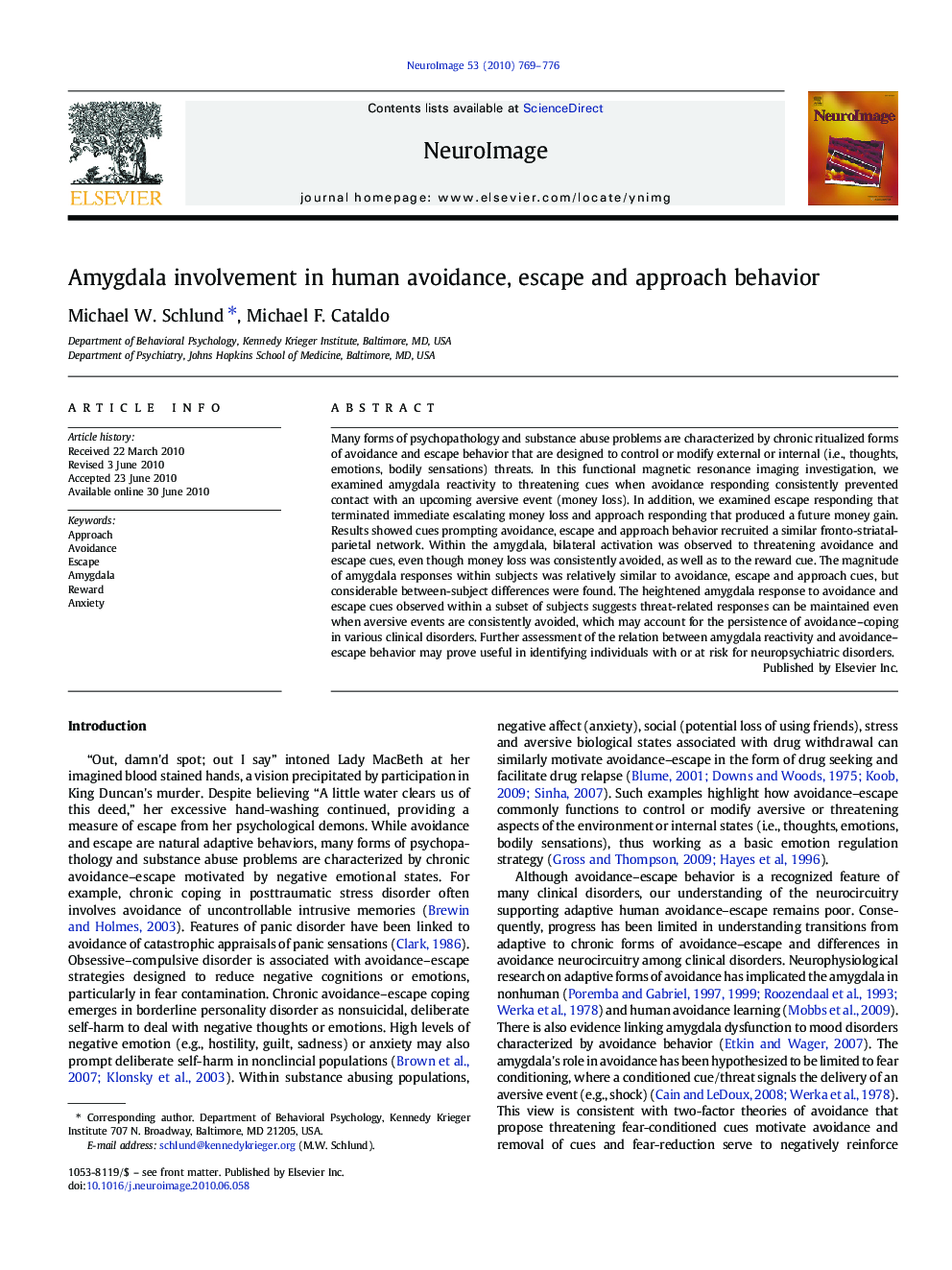| کد مقاله | کد نشریه | سال انتشار | مقاله انگلیسی | نسخه تمام متن |
|---|---|---|---|---|
| 3072293 | 1188769 | 2010 | 8 صفحه PDF | دانلود رایگان |

Many forms of psychopathology and substance abuse problems are characterized by chronic ritualized forms of avoidance and escape behavior that are designed to control or modify external or internal (i.e., thoughts, emotions, bodily sensations) threats. In this functional magnetic resonance imaging investigation, we examined amygdala reactivity to threatening cues when avoidance responding consistently prevented contact with an upcoming aversive event (money loss). In addition, we examined escape responding that terminated immediate escalating money loss and approach responding that produced a future money gain. Results showed cues prompting avoidance, escape and approach behavior recruited a similar fronto-striatal-parietal network. Within the amygdala, bilateral activation was observed to threatening avoidance and escape cues, even though money loss was consistently avoided, as well as to the reward cue. The magnitude of amygdala responses within subjects was relatively similar to avoidance, escape and approach cues, but considerable between-subject differences were found. The heightened amygdala response to avoidance and escape cues observed within a subset of subjects suggests threat-related responses can be maintained even when aversive events are consistently avoided, which may account for the persistence of avoidance–coping in various clinical disorders. Further assessment of the relation between amygdala reactivity and avoidance–escape behavior may prove useful in identifying individuals with or at risk for neuropsychiatric disorders.
Research Highlights
► Many clinical disorders are characterized by chronic ritualized forms of avoidance and escape behavior.
► Avoidance, escape and approach behavior recruited a similar fronto-striatal-parietal network and the amygdala,
► Results suggest threat-related responses can be maintained even when aversive events are consistently avoided.
Journal: NeuroImage - Volume 53, Issue 2, 1 November 2010, Pages 769–776